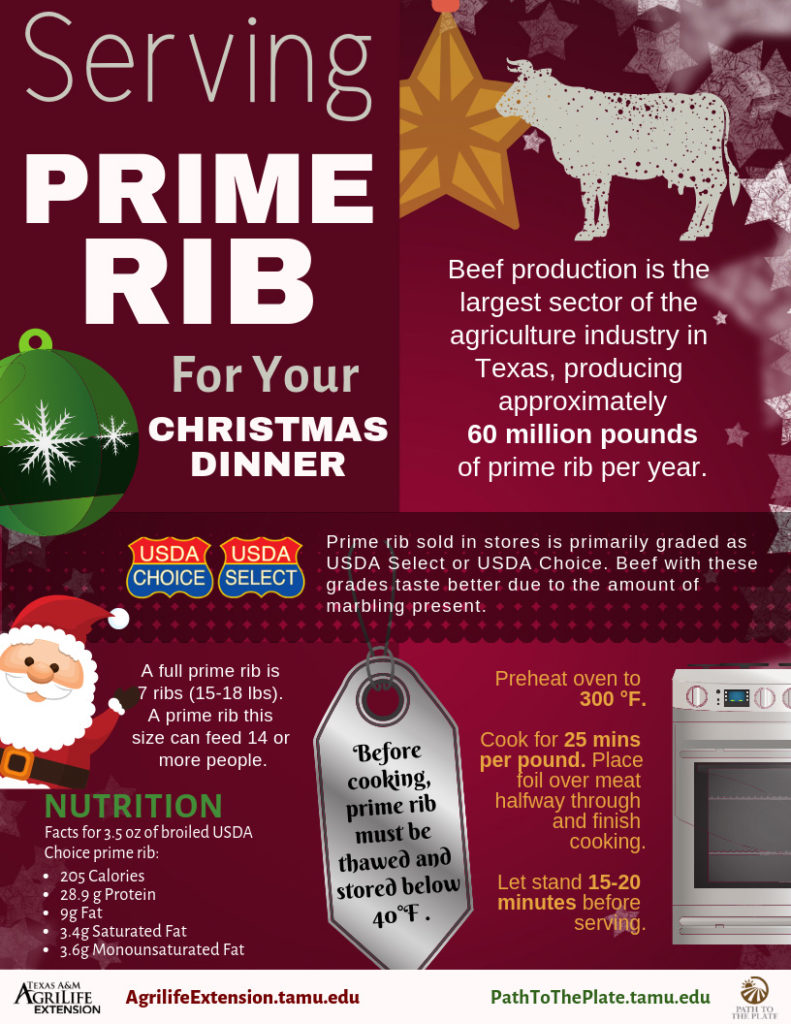Nothing quite says Merry Christmas in Texas like a prime rib served as the main dish of your Christmas meal! When it comes time to prepare your prime rib this holiday season, be sure to reference Texas A&M AgriLife Extension Service’s Path to the Plate’s tips and tricks to ensure that the meat is cooked thoroughly and properly.
With beef production being the largest sector of the agriculture industry in Texas, it is both fitting and appropriate that prime rib act as the centerpiece of the Christmas meal. According to Dan Hale, Ph.D. and meat specialist with Texas A&M’s Department of Animal Science, it is estimated that Texas produces approximately 60 million pounds of prime rib per year. Most commonly referred to as ribeye roast, beef rib roast or standing rib roast, prime rib is typically sold as both bone-in or boneless in stores. Despite its name, prime rib does not have to be from beef graded as USDA Prime — it is primarily from beef graded as USDA Select or USDA Choice. It should be noted that beef with higher USDA grades often produce a more desirable eating experience due to the higher amount of marbling present in the roast.
After purchasing, prime rib must be thawed and stored at a temperature below 40 °F to minimize the growth of bacteria. When cooking, it is traditionally prepared with a mixture of seasonings, then roasted under dry heat for 2-3 hours, depending on its size. When using a conventional oven to prepare your prime rib, follow these instructions:
- Preheat oven to 300 °F
- Season the outside of the roast as desired
- Cook, fat side up, to an internal temperature of 145 °F for medium doneness, which may take 20-25 minutes per pound. Use a thermometer to check the internal temperature
- Let stand 15-20 minutes before carving
When determining how many mouths your prime rib will feed this Christmas, keep in mind that a full prime rib is seven ribs, meaning that it weighs anywhere from 15 to 18 pounds. A prime rib this size can feed a family of 16 or more people, depending on the size of their appetite’s. Smaller prime rib options are available, including those that weigh five pounds which can serve up to six to eight people.
Because lean beef cuts such as prime rib are considered nutrient rich with low amounts of calories and fats, Hale says this particular cut of meat acts as an excellent source of essential nutrients such as protein, Zinc, B12, Iron, B6, Niacin, and Selenium. Nutrition facts for 3.5 ounces of broiled USDA Choice (lean only) prime rib are as follows:
- 205 Calories
- 9g Protein
- 9g Fat
- 4g Saturated Fat
- 6g Monounsaturated Fat
In search of other ways to spice up your holidays or family mealtime? Head over to dinnertonight.tamu.edu or beefitswhatsfordinner.com to explore the wide variety of recipes offered for prime rib!


